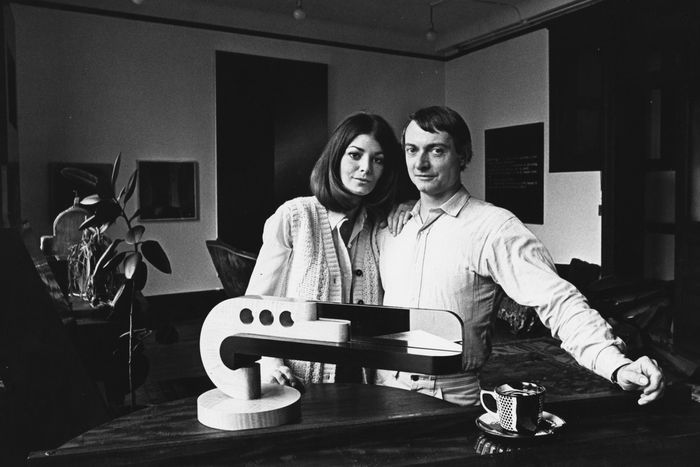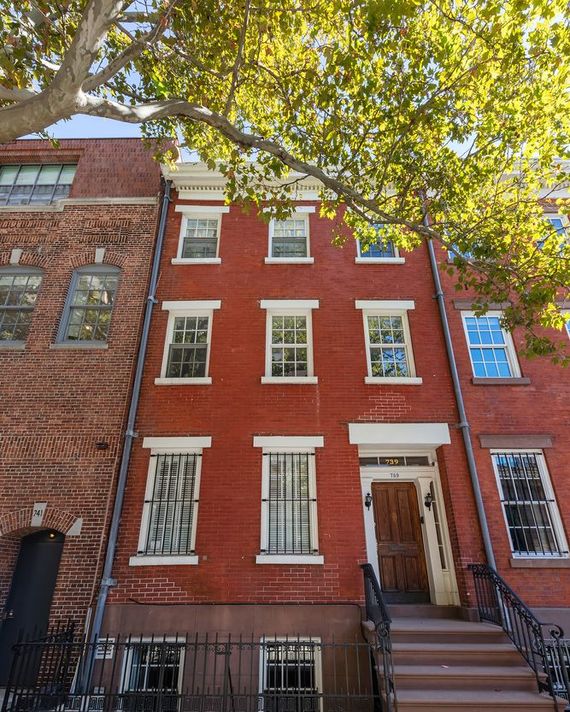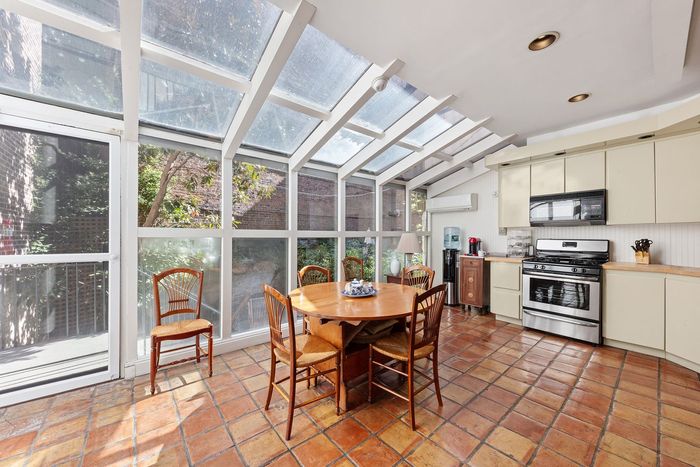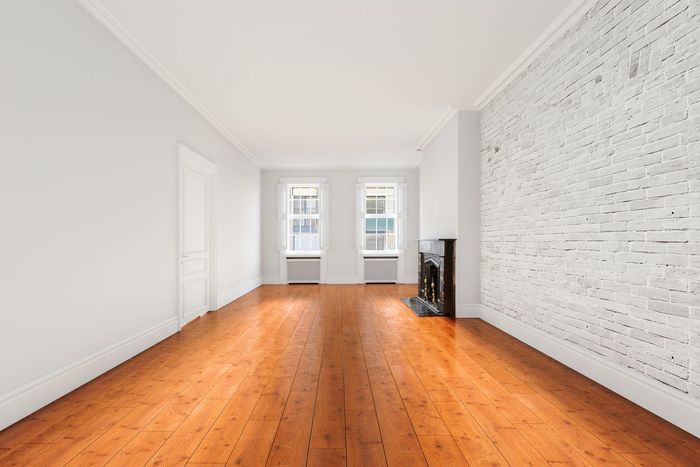
Details:
Price: $6.9 million ($2,310 monthly taxes)
Specs: 6 bedrooms, 3.5 bathrooms
Extras: Backyard, 6 fireplaces
10-minute walking radius: The Whitney, Pastis, Hudson River Park
Listed by: Lee Ann Jaffee and Steven Sumser, Compass
The artist Roy Lichtenstein was not known for living large. In 1987, when he bought a two-story metalworking factory on Washington Street in the West Village, he worked downstairs, ate lunch at the same diner every day, and lived upstairs in a one-bedroom with his wife, Dorothy. She died in July after spending most of the past three decades cementing her husband’s legacy and selling off nearly everything he had touched. One of the last remaining items to be put up for sale is a four-story townhouse directly next door to the old studio, which was used by his foundation.
739 Washington is furthest north in a line of three redbrick townhouses built in 1845 with simple Greek Revival façades that are “almost untouched by time,” according to a report by the Landmarks Commission. Records show that Dorothy bought the building in 1995, two years before Roy died. It’s unclear what she planned to do with the place or if she meant to just take in renters. But in 2022, she offered the former studio building where she had been living to the Whitney, which had been looking for a permanent home for its prestigious Independent Study Program. That moved the foundation next door, into 739. And at some point, she moved to the Lichtensteins’ Southampton estate, where she died this summer.
The $6.9 million listing acknowledges the house is “currently being used as an office,” though images don’t show any desks or file cabinets, just empty rooms and a water cooler in the kitchen. Unlike today’s West Village mansions, the 20-foot-wide house is still divided into a labyrinth of smaller rooms — with two bedrooms per floor on the top two stories and on the garden level. The dining room at the back opens on to a kitchen whose back wall has been replaced with windows that look out on a yard.
The foundation didn’t respond immediately to a request for comment about where it might be going next, but the answer may be that it doesn’t need space. The executive director told the New York Times this year that it planned to shut down entirely by 2026, having carried out its major assignment: creating a catalogue raisonné of every Lichtenstein work and its record of scholarship. (It’s posted for free online.) Much of Lichtenstein’s own collection and the artist’s correspondence and ephemera have already been donated. And in September, the Southampton house was listed for $19.99 million.
The couple met when Roy stopped by the blockbuster Pop Art show “American Supermarket” to sign shopping bags, and found Dorothy playing the part of a cashier — a simple meet-cute origin for a legacy now valued in the tens of millions. This summer, the foundation reported holding $40 million that it planned to donate. If both houses sell at face value, they’ll bring the family about $26 million.
Updated 10:21 a.m.: The article originally stated that the Roy Lichtenstein Foundation was selling the townhouse. It has since been corrected to clarify that Dorothy Lichtenstein’s estate owns the townhouse.




